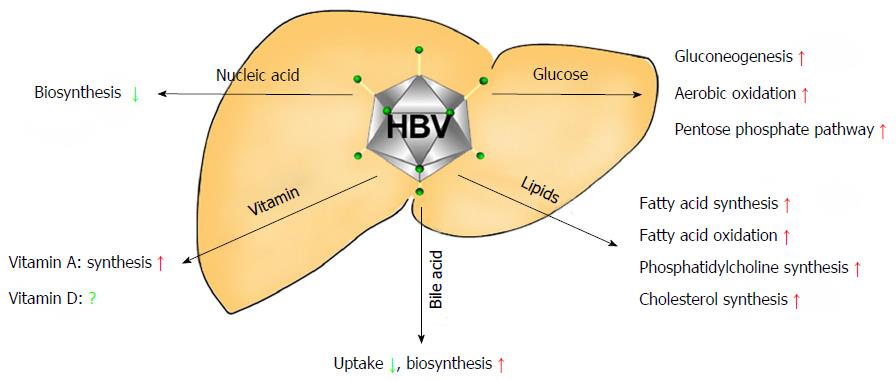Copyright
©The Author(s) 2016.
World J Gastroenterol. Sep 28, 2016; 22(36): 8161-8167
Published online Sep 28, 2016. doi: 10.3748/wjg.v22.i36.8161
Published online Sep 28, 2016. doi: 10.3748/wjg.v22.i36.8161
Figure 1 The molecular mechanisms contributing to liver steatosis following hepatitis B virus infection.
Hepatitis B virus (HBV) infection can induce the accumulation of lipids via three different regulatory mechanisms, including elevated expression of FABP1, up-regulation of LXR, SREBP1 and PPARγ and increased expression of GnT-III. On the one hand, up-regulation of FABP1 would increase fatty acid binding and transport. On the other hand, induction of LXR-mediated SREBP1 and PPARγ would result in increased transcriptional activity of hepatic lipogenic genes (FAS, SCD, ACC) and adipogenic genes (adipoQ, adipsin, AP2). In addition, elevation of GnT-III would cause glycosylation and dysfunction of apoB, finally leading to reduced secretion of VLDL (containing apoB, CHO and TG). LFA: Long-chain fatty acids; FABP1: Fatty acid binding protein 1; FAS: Fatty acid synthase; SCD: Stearoyl-CoA desaturase; ACC: Acetyl-CoA carboxylase; adipoQ: Adiponectin; AP2: aP2/adipose fatty acid–binding protein; apoB: Apolipoprotein B; GnT-III: N-Acetylglucosaminyltransferase III; CHO: Cholesterol; TG: Triglyceride; VLDL: Very low density lipoproteins.
Figure 2 Changes in the hepatic metabolic signaling pathway induced by hepatitis B virus infection.
Alterations in related signaling pathways (including glucose, lipids, nucleic acids, bile acids and vitamins) following hepatitis B virus (HBV) infection are marked and highlighted in this figure. The influence of HBV infection on vitamin D metabolism is unclear.
- Citation: Shi YX, Huang CJ, Yang ZG. Impact of hepatitis B virus infection on hepatic metabolic signaling pathway. World J Gastroenterol 2016; 22(36): 8161-8167
- URL: https://www.wjgnet.com/1007-9327/full/v22/i36/8161.htm
- DOI: https://dx.doi.org/10.3748/wjg.v22.i36.8161










